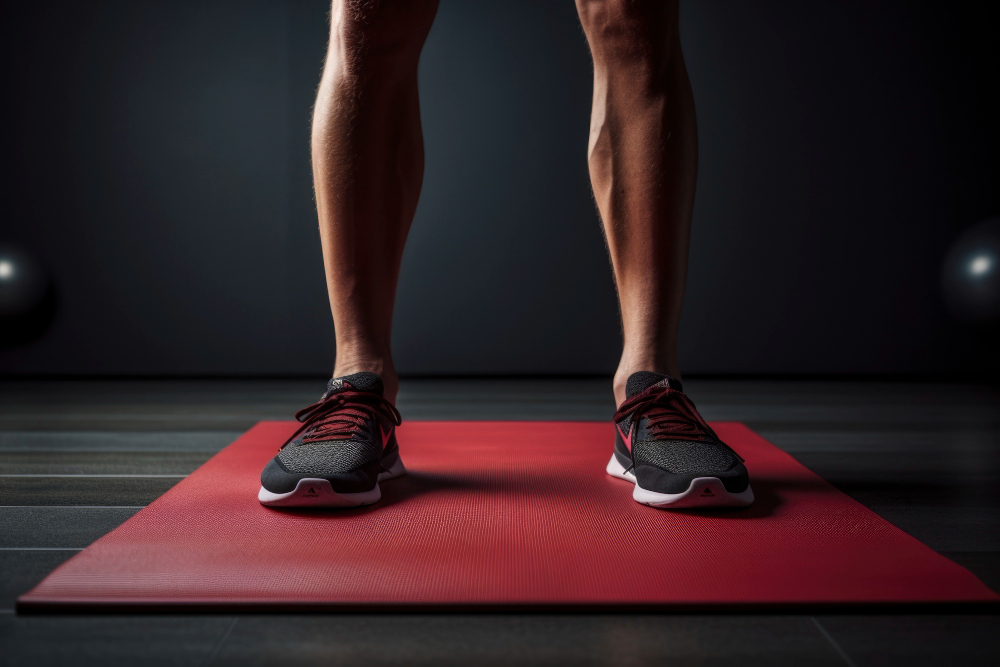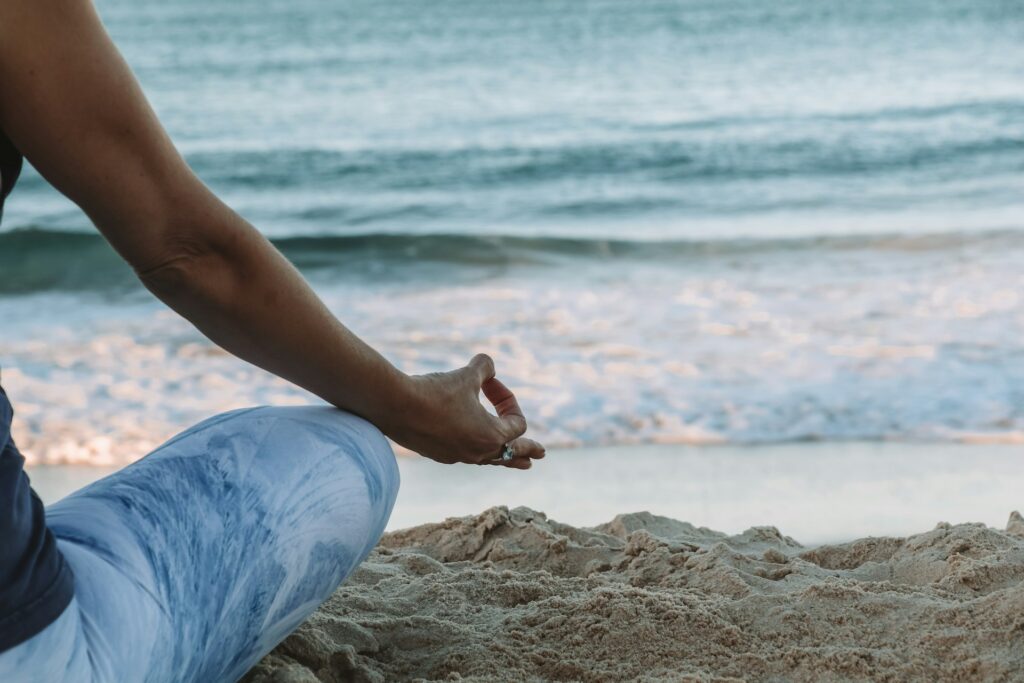You know that feeling when your body is practically screaming for some movement, but you’re so drained that even the thought of a full stretching session makes you want to crawl back under the covers? Yeah, me too. After years of pushing through exhausting days and dealing with those annoying muscle knots that seem to appear out of nowhere, I’ve discovered something that’s been a total game-changer: my “bare minimum” stretching routine.
I’m talking about those stretches that are so gentle, so effortless, that you can literally do them while still in your pajamas, half-asleep, or even during a commercial break. These aren’t going to transform you into a pretzel or make you break a sweat – they’re just simple movements that help your body remember what it feels like to not be a walking tension ball.
Why We Skip Stretching When We Need It Most
Let’s be honest here. When we’re tired, the last thing we want to do is add another item to our already overwhelming to-do list. Traditional stretching routines can feel like they require too much energy, too much time, and frankly, too much motivation that we just don’t have at the end of a long day.
But here’s the thing I’ve learned: keeping muscles flexible and healthy is needed to maintain range of motion in joints, and when we skip it entirely because we’re tired, we often end up feeling even more stiff and uncomfortable the next day. It’s like a frustrating cycle where being tired makes us avoid the very thing that could help us feel better.
The solution isn’t to force ourselves through an intense 30-minute routine when we can barely keep our eyes open. Instead, it’s about finding that sweet spot between doing nothing and doing too much – those gentle movements that feel more like self-care than exercise.
My “Too Tired to Try” Stretching Menu
I like to think of these as my stretching appetizers rather than the full meal. You can pick and choose based on what your body is asking for on any given day. Sometimes I do all of them, sometimes just one or two. The key is listening to what feels good without putting pressure on yourself to be perfect.
The Shoulder Shrug and Roll
This one is so simple it almost feels silly, but trust me on this. Sitting or standing (whatever feels more comfortable), I slowly lift my shoulders up toward my ears, hold for just a couple seconds, then let them drop. Then I roll them backward in slow, exaggerated circles – maybe five times each direction.
I do this one constantly throughout the day now, especially when I notice myself hunching forward at my computer. It’s become such a habit that I barely think about it anymore, which is exactly the point. Light, gentle rhythmic movements work best for the average person, and this definitely fits that description.
The Gentle Neck Release
For this one, I simply tilt my head to one side, bringing my ear toward my shoulder (not forcing it, just letting gravity do its thing), and hold for about 15-20 seconds. Then I do the same on the other side. Sometimes I add a gentle look up toward the ceiling and down toward the floor, but only if it feels good.
This has become my go-to when I’ve been staring at screens all day or when I wake up with that “slept wrong” feeling in my neck. The beauty is that you can do it anywhere – in bed, at your desk, while watching TV.
The Seated Spinal Twist
Even when I’m too tired to get off the couch, I can still give my spine a little love. I sit cross-legged (or just however feels comfortable) and gently turn my torso to one side, maybe placing one hand behind me for support. I’m not trying to twist myself into a pretzel here – just a gentle rotation that feels like I’m wringing out some of the day’s tension.
I hold it for maybe 20 seconds, take a deep breath, then slowly turn to the other side. Sometimes I’ll do this one while still in bed in the morning, which feels like the most luxurious way to wake up my spine.
The Hip Flexor Opener
This one has been a revelation for me, especially on days when I’ve been sitting for hours. I kneel on the floor (or on my bed if I’m feeling extra lazy) and step one foot forward into a very gentle lunge position. The key word here is gentle – I’m not trying to get into some deep warrior pose.
I just let my hips sink forward slightly until I feel a mild stretch in the front of my back leg’s hip. I stay there for maybe 30 seconds, then switch sides. If kneeling doesn’t work for you, you can even do a modified version while sitting in a chair by bringing one ankle up to rest on the opposite knee and leaning forward slightly.
The “I’m Still in Bed” Knee-to-Chest
This one is perfect for those mornings when you wake up feeling like your back has forgotten how to be a back. While lying down, I bring one knee toward my chest and give it a gentle hug with both arms. Nothing dramatic, just a soft pull that feels good.
I hold it for about 30 seconds, then switch legs, then sometimes bring both knees up together for a little back massage against the mattress. It’s like giving yourself a hug from the inside out, if that makes any sense.
The Ankle Circles and Calf Stretch
Since our feet and calves do so much work for us all day, they deserve some attention too. While sitting (or lying down), I point and flex my feet, then make slow circles with my ankles. For the calf stretch, I pull my toes back toward my shins and hold for about 20 seconds each foot.
This one is especially nice if you’ve been on your feet a lot or if you wear heels. I often do this while watching TV or even while working at my desk – it’s that unobtrusive.
Making It Work When Energy Is at Zero
The secret to actually doing these stretches when you’re exhausted is to make them as frictionless as possible. I don’t change into special clothes, I don’t roll out a yoga mat, and I definitely don’t set aside a specific time block in my schedule.
Instead, I weave them into things I’m already doing. Shoulder rolls while my coffee is brewing. Neck stretches during commercial breaks. Hip flexor openers while I’m already on the floor playing with my dog. The ankle circles happen while I’m watching Netflix, and the spinal twists often occur while I’m sitting on my bed scrolling my phone (not proud of that last one, but hey, at least I’m stretching).
Incorporating gentle stretching into your wind-down routine can be particularly effective, and I’ve found that doing just a few of these movements before bed actually helps me sleep better. It’s like I’m giving my body permission to let go of the day’s tension.
The Permission to Do Less (and Feel Good About It)
Here’s something I wish someone had told me earlier: doing a little bit consistently is infinitely better than doing nothing because the “right” way feels too overwhelming. These gentle stretches aren’t going to make you Instagram-flexible, and they’re not going to solve all your body’s complaints, but they’re going to help you feel a little more human on those days when you’re running on empty.
Stretching should not be painful, and it shouldn’t feel like another chore on your endless list. If any of these movements cause discomfort, skip them or modify them until they feel right for your body.
I’ve learned to think of this routine as my body’s equivalent of comfort food – simple, nurturing, and exactly what I need when I don’t have the energy for anything fancy. Some days I do all of these stretches, some days just one or two, and some days I do them so absentmindedly while doing other things that I barely realize I’m doing them at all.
Beyond the Stretches: Creating Your Own Gentle Movement Practice
The real magic happens when you start to notice what your specific body craves when it’s tired. Maybe your shoulders always hold tension, or maybe your hips feel locked up after long days of sitting. Pay attention to those patterns and give those areas a little extra love.
You might find that some of these stretches feel amazing, while others don’t do much for you. That’s totally normal and expected – we all carry our stress and tiredness differently. The goal is to create your own little menu of go-to movements that feel good and don’t require superhuman motivation to actually do.
Stretching can increase flexibility and improve range of motion in joints, but more importantly for those exhausted days, it can help you reconnect with your body in a gentle, caring way. It’s like sending yourself a little message that says, “Hey, I’m paying attention to you, and I’m going to take care of you the best I can right now.”
Remember, this isn’t about perfection or even about doing it “right.” It’s about finding small ways to show up for yourself when you’re running on empty, and sometimes that’s the most important thing we can do.

Important Note: This content is for informational and lifestyle purposes only and is not intended as medical advice, diagnosis, or treatment recommendations. The stretching suggestions shared here are based on general wellness practices and personal experience. Every person’s body is different, and what works for one individual may not be suitable for another.
If you experience persistent discomfort, pain, or have specific health concerns, please consult with a qualified healthcare provider or physical therapist who can provide professional guidance tailored to your individual needs. Always listen to your body and stop any movement that causes pain or discomfort.
The author and publisher are not responsible for any adverse effects or consequences resulting from the use of the suggestions or information contained in this article. Please use your own judgment and consult appropriate professionals when making decisions about your health and wellness routine.
Sources and References:
- Harvard Health Publishing. “The importance of stretching.” April 2024.
- Mayo Clinic. “Stretching: Focus on flexibility.” November 2023.
- University of Rochester Medical Center. Stretching guidelines and safety recommendations.
- Various wellness and lifestyle publications focusing on gentle movement practices.



